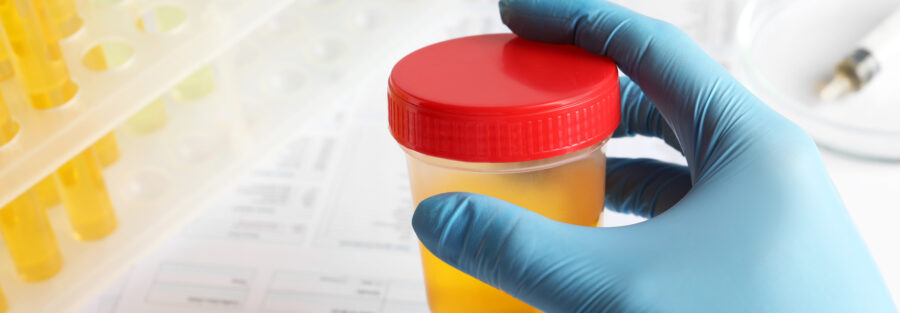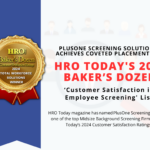Drug testing is a key aspect of workplace compliance and safety, commonly utilized across various industries to maintain drug-free environments. While there are multiple types of drug testing methods, this blog will specifically focus on urine-based drug testing, which is one of the most widely used methods in employment and contractor background screening.
The Drug Testing Process
When an individual goes for a urine test, they will visit a collection facility. These facilities may be directly operated by laboratories or be partnered locations specifically set up to collect specimens for lab testing. All collection sites adhere to strict federal guidelines to standardize the process, ensuring both accuracy and protection against tampering during specimen collection.
Specimen Collection Process
Upon arrival, individuals check in by providing the drug test registration information and a government issued picture identification form, to confirm the identity of the donor. Once called to provide a specimen for testing, they receive detailed instructions from a technician on how to collect the specimen. Any deviation from these instructions could result in an ineligible specimen, which may require retesting or even test cancellation.
Chain of Custody Form (CCF)
Every individual undergoing testing receives a Chain of Custody (COC) form, which might be either physical or electronic. This form records important information such as the individual’s name, ID, reason for testing, and specific drug types (panels) being screened. It also includes a unique specimen ID number, helping to track and report the sample accurately. The CCF’s structured process ensures each sample is securely documented from collection through analysis.
Reasons for a Refusal to Test & Shy Bladder
A drug test may be coded as a “Refusal to Test” under certain conditions, such as:
- Providing insufficient specimen and refusing to wait and provide more.
- Submitting a specimen with a temperature that falls outside the acceptable range and declining to provide another.
- Leaving the collection site before specimen submission.
Sometimes, an individual may struggle to provide enough urine, a situation known as “Shy Bladder.” In this case, the individual is given up to three hours to attempt further collection. If, after this timeframe, they still cannot produce a sufficient sample, the test may be recorded as a Shy Bladder occurrence.
Laboratory Testing
Only certified labs handle the testing for drug screenings. Collection sites are not actual laboratories and instead rely on couriers to ship samples to certified labs for analysis. Delays may occasionally occur due to weather, which can impact turnaround times.
Once at the lab, samples undergo a two-step testing process:
- EMIT (Enzyme Multiplied Immunoassay Technique): an initial screening test.
- GC/MS (Gas Chromatography Mass Spectrometry): a confirmatory test for positive results.
In case of disputes, a sample can be retested at a different certified lab using the original specimen.
The Role of the Medical Review Officer (MRO)
A Medical Review Officer (MRO) is a licensed physician trained in interpreting drug test results and substance abuse issues. The MRO is responsible for reviewing lab results and contacting the donor if there are any positive findings or irregularities.
Final Thoughts
Drug testing plays an essential role in ensuring workplace safety and compliance. We hope that providing more information and insight into the world of drug testing will help you better understand the process and feel more prepared and informed when completing this testing as part of a background screening program.
The above information is provided for information purposes only and should not be construed as legal advice. Users are reminded to seek legal counsel with respect to their obligations and use of PlusOne Screening Solutions services.




